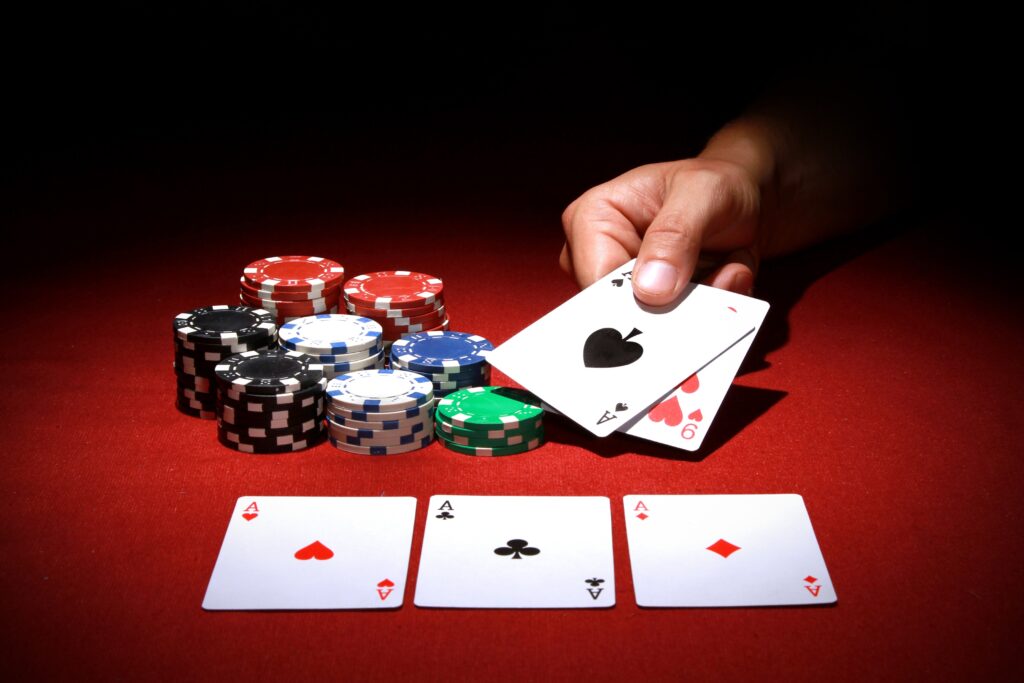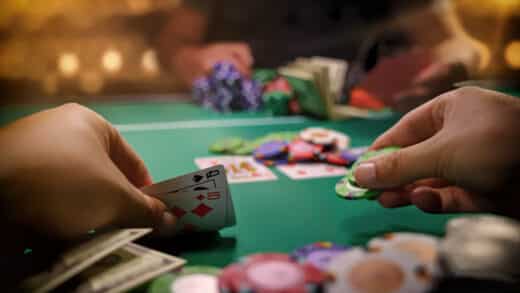Omaha Poker is a popular variant of poker that is gaining more and more popularity among both amateur and professional players. However, once you learn the rules and basic strategies, Omaha Poker can be an exciting and challenging game to play.
In this blog post, we will provide you with a comprehensive guide to Omaha Poker, including the rules of the game, its objectives, and basic gameplay. We will also cover the different types of Omaha Poker, including Pot-Limit and Hi-Lo versions, and discuss the importance of hand rankings and betting strategies. By the end of this post, you will have a solid understanding of how to play Omaha Poker and be ready to try it out for yourself.
Objectives of the Game
The primary objective of Omaha Poker is to make the best possible five-card hand using a combination of two of the player’s own hole cards and three community cards on the board. The player with the best hand at the end of the final betting round wins the pot.
There are two main types of Omaha Poker: Pot-Limit Omaha and Omaha Hi-Lo. In Pot-Limit Omaha, the highest hand wins the entire pot, while in Omaha Hi-Lo, the pot is split between the highest and lowest hands, with the latter being made from a separate set of five cards.
In both variants, players can use any two of their four hole cards and three of the five community cards to make their hand.
Overall, the objective of Omaha Poker is to outsmart and outplay your opponents by making the best hand possible using your cards and the community cards on the board.
Basic Rules of Omaha Poker
Basic Rules of Omaha Poker:
- Number of Players: Omaha Poker can be played with 2-10 players.
- Deck: A standard 52-card deck is used.
- Dealer Button: The dealer button indicates who is dealing the cards for the current hand and rotates clockwise after each hand.
- Blinds: Before each hand, the two players to the left of the dealer must place mandatory bets known as the small and big blinds. The big blind is typically twice the size of the small blind.
- Deal: These are private cards that only the player can use to form a hand.
- Betting Round 1: The first betting round begins with the player to the left of the big blind. Players can choose to call, raise or fold based on the strength of their hole cards.
- Flop: After the first betting round, the dealer reveals the first three community cards face-up on the table.
- Betting Round 2: The second betting round begins with the player to the left of the dealer button. Players can choose to call, raise or fold based on the strength of their hand using their two hole cards and three community cards.
- Turn: After the second betting round, the dealer reveals the fourth community card face-up on the table.
- Betting Round 3: The third betting round begins with the player to the left of the dealer button. Players can choose to call, raise or fold based on the strength of their hand using their two hole cards and four community cards.
- River: After the third betting round, the dealer reveals the fifth and final community card face-up on the table.
Gameplay
Omaha Poker gameplay follows a similar pattern to Texas Hold’em, with four betting rounds and five community cards. However, there are some key differences in gameplay that make Omaha Poker unique:
- Four Hole Cards: Each player is dealt four hole cards instead of two, which provides more opportunities to make a winning hand. However, players must use exactly two of their hole cards and three of the community cards to make their hand.
- Community Cards: In Omaha Poker, five community cards are dealt face-up in the center of the table. These cards are available for all players to use in their hands. Unlike Texas Hold’em, where players can use any combination of their hole cards and the community cards, Omaha players must use exactly two of their hole cards and three community cards.
- Betting Rounds: There are four betting rounds in Omaha Poker. The first round of betting occurs after the hole cards are dealt, followed by three additional rounds after the flop, turn, and river.
- Pot-Limit and Hi-Lo: There are two main types of Omaha Poker, Pot-Limit and Hi-Lo. In Pot-Limit Omaha, the highest hand wins the entire pot.
- Hand Rankings: Hand rankings in Omaha Poker are the same as in Texas Hold’em, with a royal flush being the highest-ranking hand, and a high card being the lowest. It’s important to understand the ranking of hands and how to make the best hand possible using two of your hole cards and three of the community cards.
Overall, Omaha Poker gameplay requires strategic thinking and careful consideration of your hand and the community cards. Players must use their four hole cards to make the best possible hand, keeping in mind that they can only use two of their hole cards and three of the community cards.

Hand Rankings in Omaha Poker
The hand rankings in Omaha Poker are the same as in Texas Hold’em. Here are the hand rankings from highest to lowest:
- Royal Flush: A straight flush with the Ace, King, Queen, Jack, and 10 of the same suit.
- Straight Flush: Any five cards of the same suit in numerical order.
- Four of a Kind: Four cards of the same rank.
- Full House: Three cards of the same rank and two cards of another rank.
- Flush: Any five cards of the same suit, not in numerical order.
- Straight: Any five cards in numerical order, not of the same suit.
- Three of a Kind: Three cards of the same rank.
- Two Pair: Two cards of the same rank, plus two cards of another rank.
- One Pair: Two cards of the same rank.
- High Card: If no players have any of the above hands, the player with the highest card wins.
Players must use exactly two of their four hole cards and three of the five community cards to make their best hand. Players may have to “play the board,” meaning they use all five community cards to make their best hand.
Additionally, in Hi-Lo Omaha, the hand rankings differ slightly. The highest hand rankings remain the same.
Conclusion
Omaha Poker is a popular variation of Texas Hold’em that offers unique gameplay and challenges for players. The game requires strategic thinking and careful consideration of the hand and community cards. As players must use exactly two of their four hole cards and three of the community cards to make their best hand. The four betting rounds provide ample opportunity for players to win big or lose big. It’s crucial to have a solid betting strategy and understand the rules and hand rankings of the game. With its fast-paced action and high-stakes gameplay. Omaha Poker is a favorite among experienced and skilled players who are looking for a new challenge in the world of poker.








